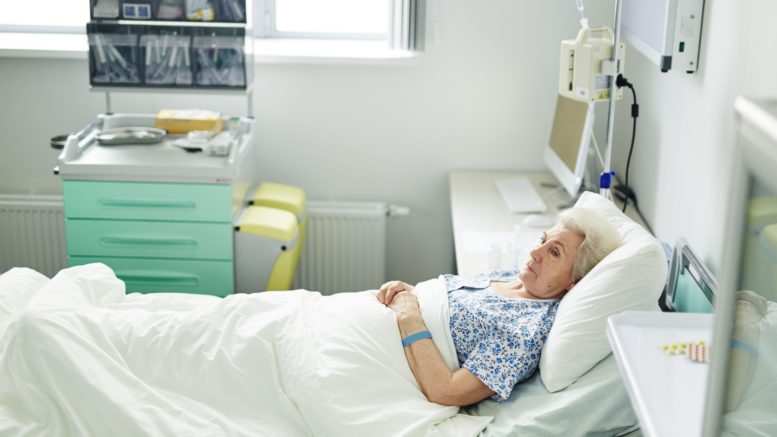It is estimated that 1 in every 100 hospitalized patients will be affected by non-ventilator hospital-acquired pneumonia (NVHAP). While NVHAP is a significant patient safety and quality of care concern, there is no national tracking or accountability, meaning it’s most likely unaddressed by many healthcare organizations.
A recent journal article in Infection Control & Hospital Epidemiology detailed a call to action from national organizations, including The Joint Commission, to address NVHAP. The call to action includes launching a national healthcare conversation about NVHAP prevention and encouraging researchers to develop new strategies for NVHAP surveillance and prevention. In response to this call to action, The Joint Commission has issued a new Quick Safety advisory, “Preventing non-ventilator hospital-acquired pneumonia.”
The Quick Safety reviews current NVHAP prevention strategies such as:
• Maintaining regular oral care and patient mobility.
• Elevating the head of the patient’s bed.
• Minimizing the use of acid-suppressing medications and sedation.
• Performing dysphagia screening in high-risk patients.
• Using modified diets and feeding strategies for patients with abnormal swallowing.
• Following standardized processes to place and manage feeding tubes.
• Conducting breathing exercises, chest physiotherapy and incentive spirometry.
• Educating patients and families about NVHAP prevention.
Additionally, the Quick Safety provides recommended safety actions for hospitals to prevent NVHAP while improving patient safety and quality of care, lowering the risk of sepsis, reducing health care costs, and ultimately saving lives. Some of the actions include:
• Obtaining buy-in from leadership and health care providers about the importance of NVHAP prevention.
• Overcoming beliefs that NVHAP prevention strategies such as oral hygiene and mobility are optional tasks rather than standard-of-care interventions.
• Educating staff about the risks of NVHAP and prevention methods such as aspiration precautions.
• Evaluating workflows from a systems perspective and establishing processes that facilitate the prevention of NVHAP.
• Evaluating patients for swallowing issues and adjusting nutrition and feeding assistance based on this evaluation.
• Performing outcome and/or process surveillance to determine rates of infection and compliance with processes to prevent NVHAP.
• Developing operational NVHAP tracking systems to assess the impact of prevention initiatives.
“It is important that we continue the national health care conversation about non-ventilator hospital-acquired pneumonia to help reduce and prevent the occurrence of this serious infection,” says Sylvia Garcia-Houchins, MBA, RN, CIC, director or infection prevention and control at The Joint Commission. “The Joint Commission’s new Quick Safety advisory is a step toward working with hospitals to implement strategies and safety actions to address NVHAP.”
Source: The Joint Commission
